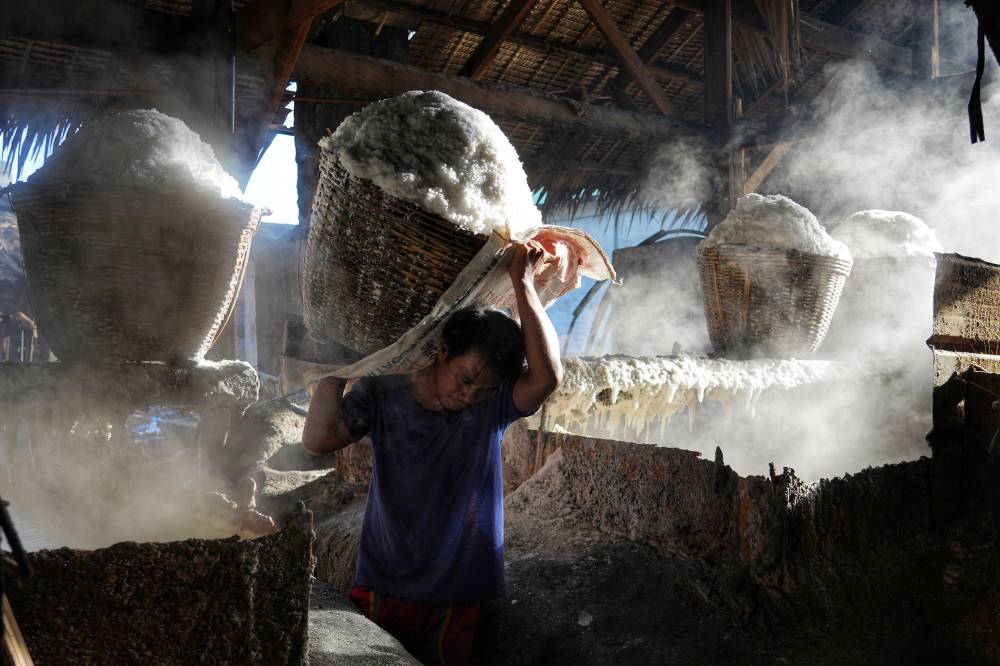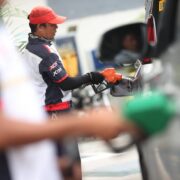PCA plans to buy more salt produced in Pangasinan

CALASIAO, PANGASINAN–After facing challenges such as the lack of market and, more recently, the devastation of their farms by Tropical Storm “Emong” in July, salt producers in Dasol town are seeing a ray of hope: procurement of salt by the Philippine Coconut Authority (PCA).
Mark Roy Macanlalay, PCA manager in Ilocos Region, said the agency now has a bigger budget than in previous years for the purchase of agricultural-grade salt, which will be used as fertilizer to boost coconut yields nationwide.
The program is in line with the Philippine Salt Industry Development Act (RA 11985), which mandates government agencies to assist salt farmers through technology, research, financing, production, and marketing support, he said.
Edwin Tolete, president of the Dasol Salt Producers Association, said the PCA already came to their aid last year by purchasing 5,000 bags (250,000 kilos) of salt that had been stored in warehouses waiting for buyers. The PCA plans to buy again this year, and farmers are hoping the volume will be much greater.
“We still have plenty of stock in the warehouses, but buyers are nowhere. Then last July, Emong lashed our farms, destroying dikes and water gates, and tearing off roofs and walls of warehouses, exposing our stored salt. Most of us are still repairing dikes but we are gearing for the next production cycle,” Tolete told the Inquirer by phone on Sunday.
Fortunately, typhoon Emong did not bring heavy rain; otherwise, the stockpiled salt would have been melted or washed away.
Requirements
Macanlalay said this year the PCA has over P1 billion for salt procurement, compared with P200 million last year. Local salt will be purchased at P800 to P1,200 per 50-kilo sack, depending on delivery distance, since the price already includes hauling and transport.
However, producers must still complete requirements such as a certificate of product registration from the Fertilizer and Pesticide Authority (FPA) and a PCA license to operate before they can sell to the agency.
In Bolinao, Nestor Batalla, who manages the provincial government’s 473-hectare salt farm, said about 10,000 metric tons of salt remain unsold.
“We have the same problem as the Dasol producers. Like them, we are still completing the required documents, but we are also helping them with their paperwork,” said Batalla, who is also the Pangasinan assistant provincial agriculture officer.
Tolete said the Dasol producers are rushing to complete the documents so they can clear their warehouses before the production season begins in September. Unlike the Bolinao farm, which has government backing, Dasol farmers fund operations themselves. “We need P8,000 for the FPA laboratory fee for product registration. We plan to use proceeds from last year’s sale to the PCA,” he said.
Dasol has been engaged in salt production for decades. Its 10,000 banigan (salt beds measuring 18 feet by 20 feet) each produce about five kaings (baskets) of rock salt. The industry supports 275 farm owners and workers, not including wives and children who usually help with harvesting and hauling to warehouses.
Agriculture-grade
Macanlalay said agricultural-grade salt is applied at one kilo per coconut tree annually to increase fruit yield. Normally, a tree produces 40 to 60 nuts a year depending on variety, but proper fertilization can significantly raise output.
The Philippines has 345 million coconut trees, including about 900,000 in Ilocos Region, mostly in Cagayan and Bolinao town in Pangasinan. Nationwide, there are 20 million coconut farmers who are registered under the National Coconut Farmer Registry System and eligible to benefit from PCA’s salt fertilization program.
“That’s how many coconut trees need a kilo of agricultural-grade salt each year,” Macanlalay said. “And with President Marcos’ order to support local salt producers, the PCA will buy from them.”
Pangasinan’s salt industry has long struggled against massive importation. Traditional buyers turned to cheaper imported salt, making it difficult for local producers to survive. Imported salt, such as that from Australia, is mined, so production involves less labor cost. In the Philippines, salt is made through backbreaking work under the scorching sun.
Data from the Philippine Statistics Authority and the Bureau of Fisheries and Aquatic Resources showed the country imports 550,000 metric tons of salt annually, accounting for about 92 to 93 percent of national demand.
Tolete said Dasol alone produces about 25,000 metric tons annually.
Salt producers are hopeful that with the Philippine Salt Industry Development Act signed in March last year by President Marcos, the industry will recover, especially with the 9 percent tariff on imported salt that could help curb inflows from abroad.

















